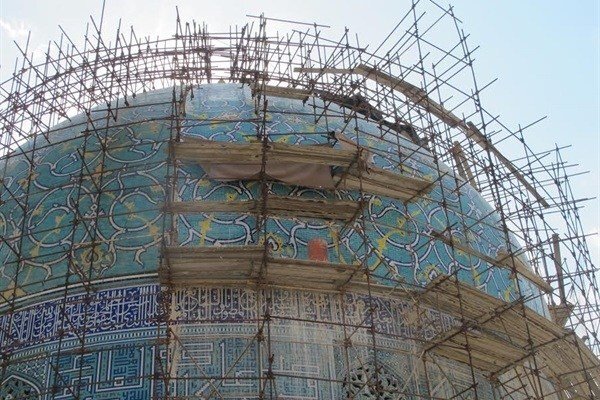Imam Mosque scaffolding to come down after 10 years

TEHRAN – The scaffolding on the 17th-century Imam Mosque is scheduled to be off in near future, Isfahan province’s tourism chief has said.
The scaffold-free monument will mark an end to ten years of conservation work, Mehr quoted Alireza Izadi as saying on Sunday.
“Restoration work on Imam Mosque’s dome is finished... and we have scheduled to remove the scaffolding poles during the cultural heritage week after a decade.”
A masterpiece of Islamic architecture, Imam Mosque stands tall at the southern end of UNESCO-registered Naghsh-e Jahan Sq. (Imam Square) in Isfahan, central Iran. The majestic place of worship is impressive because of its sheer size and incredible decoration.
Originally named Masjed Shah (“the Shah Mosque”), its construction began in 1611 during the rule of the Safavid King Shah Abbas the Great who reigned from 1588 to 1629. The mosque’s topmost dome was completed in the last year of his sovereignty.
Its interior and exterior walls are fully decorated with a polychrome, mostly dark blue, glazed tile revetment above a continuous marble dado.
Many believe each of the mosque’s parts is a work of genius that leaves a lasting impression. This palace of devotion owes its splendor mostly due to being covered with seven-color mosaic tiles and symmetrical calligraphic inscriptions.
Imam Square is hemmed on four sides by magnificent buildings: to the east, the Sheikh Lotfollah Mosque; to the west, the palace of Ali Qapu; to the north, the portico of Qeysarieh; and to the south, the eminent Imam Mosque.
“The square was at the heart of the Safavid capital’s culture, economy, religion, social power, government, and politics. Its vast sandy esplanade was used for celebrations, promenades, and public executions, for playing polo and for assembling troops,” according to the UNESCO website.
Isfahan has long been nicknamed as Nesf-e-Jahan which is translated into “half the world”; meaning seeing it is relevant to seeing the whole world. The city is home to many versatile artisans who underpin its reputation as a living museum of traditional culture.
AFM
Leave a Comment